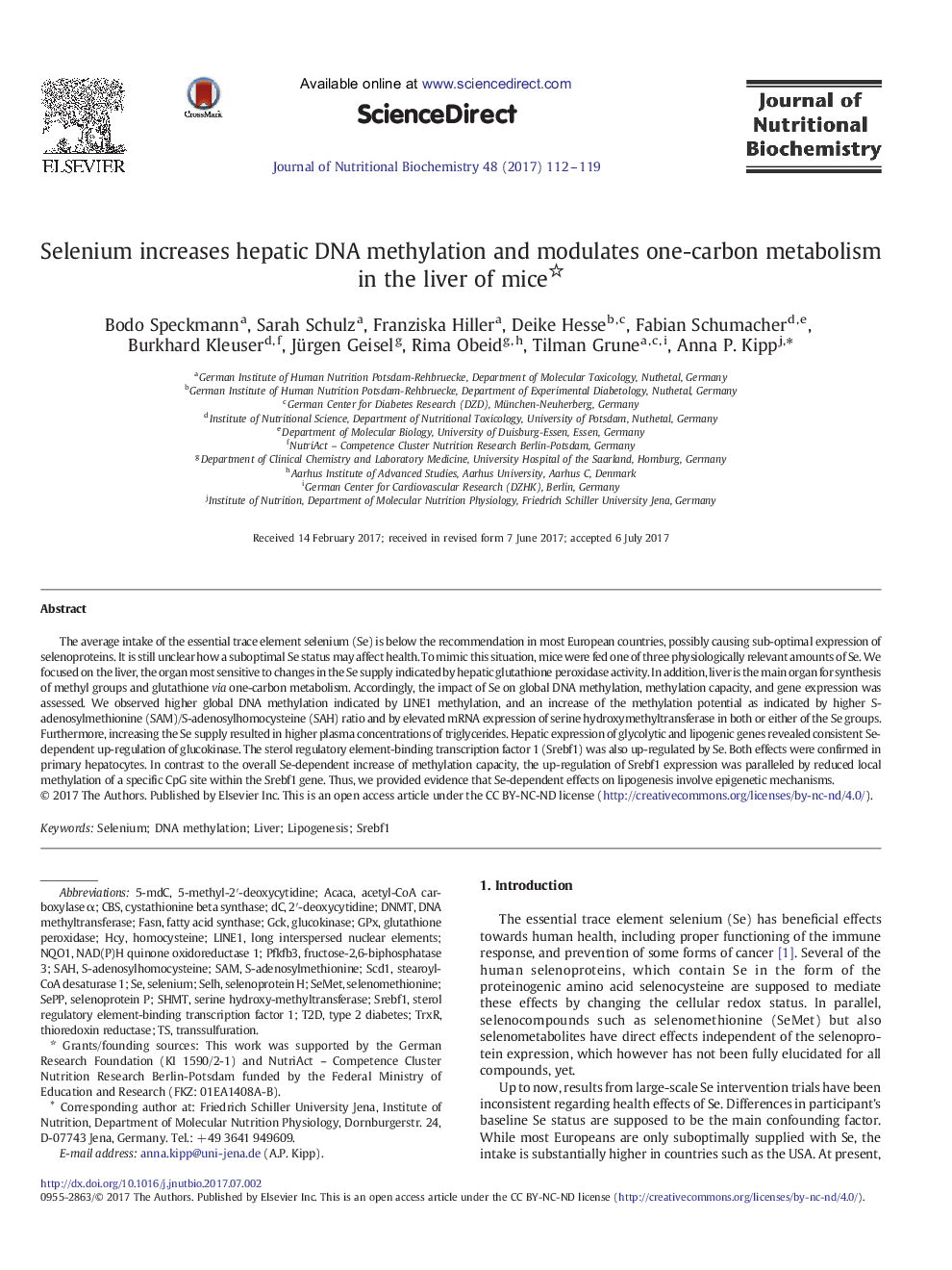| Article ID | Journal | Published Year | Pages | File Type |
|---|---|---|---|---|
| 5512790 | The Journal of Nutritional Biochemistry | 2017 | 8 Pages |
The average intake of the essential trace element selenium (Se) is below the recommendation in most European countries, possibly causing sub-optimal expression of selenoproteins. It is still unclear how a suboptimal Se status may affect health. To mimic this situation, mice were fed one of three physiologically relevant amounts of Se. We focused on the liver, the organ most sensitive to changes in the Se supply indicated by hepatic glutathione peroxidase activity. In addition, liver is the main organ for synthesis of methyl groups and glutathione via one-carbon metabolism. Accordingly, the impact of Se on global DNA methylation, methylation capacity, and gene expression was assessed. We observed higher global DNA methylation indicated by LINE1 methylation, and an increase of the methylation potential as indicated by higher S-adenosylmethionine (SAM)/S-adenosylhomocysteine (SAH) ratio and by elevated mRNA expression of serine hydroxymethyltransferase in both or either of the Se groups. Furthermore, increasing the Se supply resulted in higher plasma concentrations of triglycerides. Hepatic expression of glycolytic and lipogenic genes revealed consistent Se-dependent up-regulation of glucokinase. The sterol regulatory element-binding transcription factor 1 (Srebf1) was also up-regulated by Se. Both effects were confirmed in primary hepatocytes. In contrast to the overall Se-dependent increase of methylation capacity, the up-regulation of Srebf1 expression was paralleled by reduced local methylation of a specific CpG site within the Srebf1 gene. Thus, we provided evidence that Se-dependent effects on lipogenesis involve epigenetic mechanisms.
Graphical abstractDownload high-res image (147KB)Download full-size image
